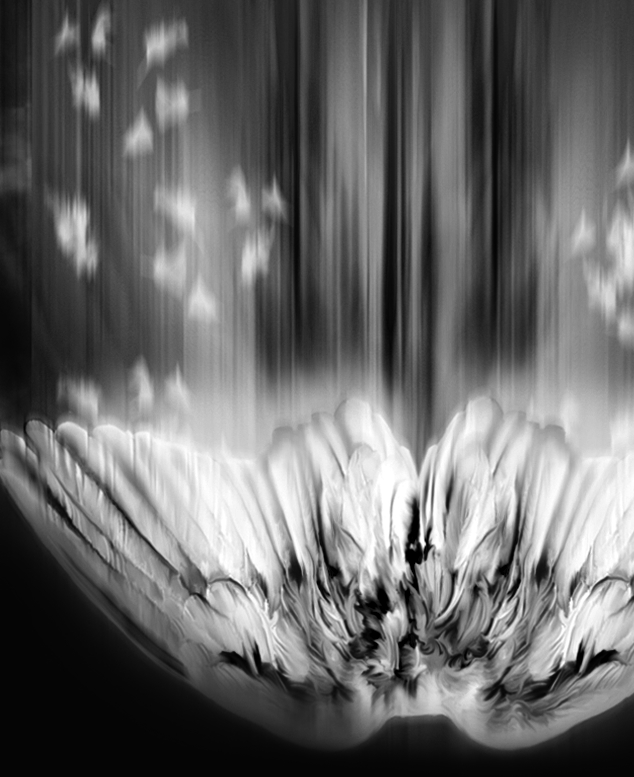
In contrast to its shorter version, Long Form Three is probably the least executed and least memorable form within the American Kenpo system. One would rarely hear that Long Form Three is a practitioner's favorite form. Yet, Long Form Three probably has the greatest number of "sanctioned" variations of any form in the system; where sanctioned means an entire lineage recognizes a different execution from what the founder would consider the intended standard.
Why is this? Simply put, compared to its siblings Long Form Three is a relatively awkwardly executed and staccato form. By many practitioners' measure, Long Form Three should flow more like Short Form Three or subsequent forms. Another way to express this is that it just doesn't fit well with these other forms. The overall feel of its execution does not lend itself to flowery movement.
Basically, Long Form Three feels like one of the lower (dictionary) forms and not like a higher (encyclopedia) form. Yet, it is sandwiched between two flowery forms. Because of this, some practitioners tend to make modifications, in an attempt to make the form feel less staccato. This is typically done through short-cutting movement. But this practice results in mumbled and less defined maneuvers, not flowery movement. Other times, movements are modified or eliminated, resulting in a form that still doesn't flow, but also doesn't show the information that it was designed to impart. All in an attempt to change the feel of the form's execution.
So, what causes this lack of flow? Basically, this comes down to four factors, all of which are major themes of the form. These factors are listed in order of magnitude of effect on the form. First, the fact that the form has a large number of isolation sequences (which ties in with #4). Second, the fact that the horse stance is the dominant stance of the form (partially because of #1). Third, the examination into linear and circular motion and the transition between them. And, finally the fact that the form's predominate theme revolves more around an over-arching examination into applied (dead) attacks (see #1 & #3) over minor in-flight (semi-live) attacks. Arguably, some of the more flowery sections of the form are those areas that assess semi-live attacks.
So, what does all this have to do with improving one's execution of the form? One should accept and understand the purpose of the form, its place in the system, and instead of resisting the design of the form, embrace it. Make the movements crisp and defined. Don't try to force them to be flowery, when they are not designed to be that way. Instead, concentrate on understanding their purpose and meaning and the information they are trying to impart. Understand that they serve an important purpose from a systematic perspective. That they are building blocks which can be integrated back into the self-defense division of the system.
In other words, this form is replete with valuable maneuver sequences that are intended to help bolster one's defensive options from dead and semi-live attack situations. These maneuvers may be used in conjunction with self-defense techniques, and when properly integrated, provide solutions that are not directly demonstrated within the self-defense division of the system. They are furnished to the practitioner in one division (forms) with the intention to be used in another division (self-defense) of the system, so that the practitioner can work with them and weave them back into a live situation. In short, they are answers to questions the practitioner has yet to ask, but through proper examination can be invaluable.
Approaching Long Form Three from this perspective will not only help one's execution of the form, but will also prevent the form from slipping into a meaningless mass of movements, instead of a detailed study of motion. If the information contained within the form is preserved and maintained, the form's correct execution will also be maintained. Otherwise, the opposite is true. If the information is not maintained, over the generations of teacher - student relationships, the form will morph into something that is no longer recognizable from its original definition and intention. That would be a shame if this were to happen. And, this is the purpose of this guide series, to provide original information and intent, in an effort to halt such a decline.
Therefore, this chapter will not try to work within the framework of alterations / enhancements to the form. It will concentrate solely on the original presentation; its idealized execution, and improving / correcting problems that arise from that standpoint. Because of this, a conscious decision has been made to only work within the form's original, idealized execution and not delve into the possible stylized modifications that are frequently found to be made to the form. These adjustments will not be recognized, examined, nor cataloged in this chapter. They are left for the reader to review and scrutinize on their own. For more information on idealized vs stylized execution, refer to the "Execution of Long Form Three / Execution Style" section of this guide.
Finally, tips and methods for improving your execution of the form, from a more basic and detailed standpoint, can be found in the much earlier guides of this series. And, although physical execution of the form will still be scrutinized as in the past, more of an emphasis will be added on the form's overall execution, and little less on the minute details. In other words, this guide will rely upon a slightly more macro approach, in contrast to the more micro and detailed study presented in the much earlier guides of this series.